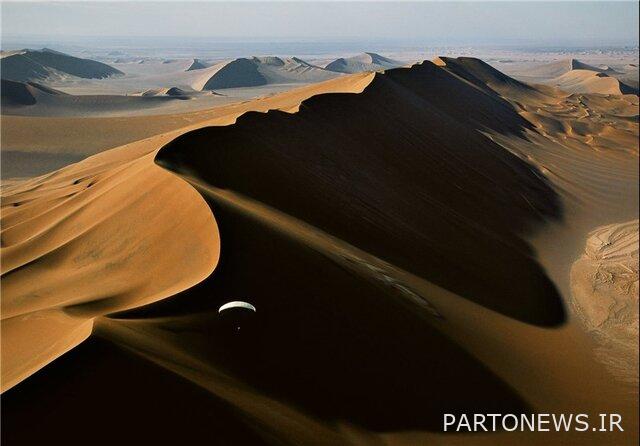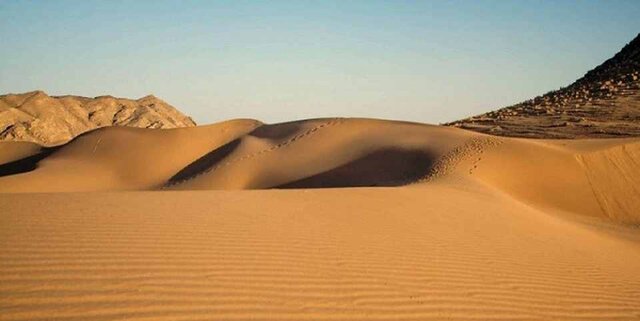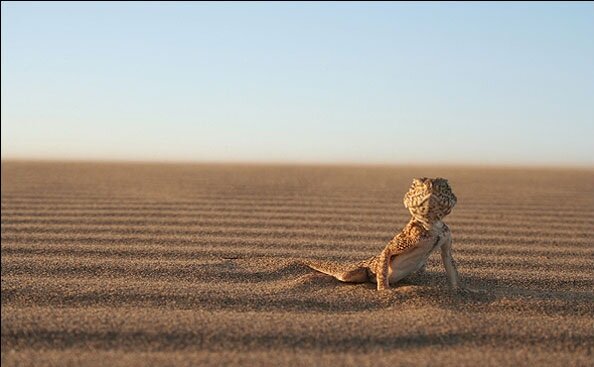Here the stars are closer – Siri in Iran

The deserts of South Khorasan are intellectual attractions for tourism, the more we pay attention to them, the more foreign tourism will flourish. South Khorasan is known for its beautiful deserts. Deserts that cannot be seen anywhere in the world. These attractions with all their golden days and exciting nights can be a unique aspect for tourism.
In this article you will read:
Garmab Lut desert and rare birds
The distance between Khor village, which is 80 km away from Birjand, and Lot mineral spa is 50 km away from Khosuf city. The talents and facilities of the region include; The construction of a hydrotherapy complex, the large Khor plain with rare desert birds and the possibility of deer breeding, spectacular and large Garmab reeds in the heart of this desert and behind Mount Garmab, the natural forest of Taq and Gaz behind Mount Garmab, the presence of wild animals in Mount Abgarm and the creation of hunting grounds, hills Sand in the Khor forest and the possibility of trekking desert tours and safari tours, the presence of indigenous and local life in the region, the breeding of wild and domestic camels and camel riding facilities in the region, the proximity to the historical village of Khor with beautiful windmills and old houses, and the participation of the country’s most prominent professional desert explorers. Is.
Visiting deserts, stargazing, safari in Ferdows desert, three Sarayan castles, Rigzar Beshroieh, Helvan Tabas and Akbarabad Khosf, as well as camel riding, hiking in the sands, and conducting special tours to familiarize yourself with the flora and fauna of desert areas. You can find peace in the heart of the desert; Something that is missing in today’s busy lives. The best time for desert trekking is autumn, winter and early spring.

The stars you see only here
As one of the most unique deserts in the east of the country, the Three Castles Desert of South Khorasan is so beautiful and attractive that the talk of its wonders has even reached the personal page of the Minister of Cultural Heritage.
Due to having a dark sky for observing the stars, Se Qala Desert has a special feature and importance, and due to this feature, it has attracted the attention of amateur and professional groups of astronomy enthusiasts. Among the other advantages of this desert, we can mention the vast desert and the sand dunes around the astronomical observatory, which have suitable and ideal conditions for any group of enthusiasts and nature lovers, such as the implementation of stargazing programs, rallies in the vast desert, and navigation and desert climbing in Sand dunes are possible at the same time.
According to the data collected by the experts of the Iranian Astronomical Society over the years, it is possible to observe stars with a magnitude of 7.2 in the place of Se Qala, which according to the magnitude of the darkest points on the planet (around 7.5), the place in question is one of the darkest and It is considered the most starry places on our planet.
Open visibility horizon and about zero degrees at the observatory location, high security of the area, having beautiful and exceptional desert attractions including the flowing sand dunes (Mahoor Hill), salt lake, Deq (completely flat and hard land that does not have any vegetation) and residences Beautiful and cozy eco-tourism introduces this area as a spectacular and unique attraction in the region and the country, and of course, the meteor shower in Sawashi every year, especially in the month of August, has a beautiful and special effect.
Mozaffari desert and the favorable conditions for the presence of different species of wildlife
Plund desert, which is also known as Mozaffari protected area, is one of the other attractions of Ferdous city in South Khorasan. Due to its desert and mountainous topography, this area has suitable conditions for the presence of various species of wildlife, including the Iranian donkey.
Pelvand desert, which is also known as Mozaffari desert or Ferdous, is one of the famous places of Ferdous and is located in South Khorasan province and 40 km northwest of Ferdous city, on the edge of Chah Plvand village. The villages of Kajeh and Chahnu are located in the north of this desert and are bounded by Kal Namak from the west, Ibrahim Abad and Taher Abad villages from the east, and Rabat Shur Wildlife Sanctuary from the south.
Mozaffari desert with an area of 92,808 hectares was recognized as Ferdous protected area in 2006. One of the characteristics of this region is the intersection of desert and desert with heights and mountains, which creates a beautiful and spectacular view. Sand dunes, salt flats and desert areas, along with mountainous areas, a sand dune in the shape of a leopard’s tail and a spectacular sand mountain, are a special feature of this region.
There is life in the Plund desert. The presence of various species of animals, including Jabir (deer native to Iran) and Iranian gour, have made Plund one of the best places to observe wildlife.
The plant species of the region include beneh, kasur, skanbil, gazelle, tag, kich, mountain almond, wild barberry, darmene, anghuzeh, black cumin, herbaceous plants, primrose, thyme, red tulip, kharsht, ephedra and some plants of the chicory family. . In addition, wild figs, barhang, tangerine, karavan kesh and kharsht are also found in Plund.
The animal species of Mozafari region also have a good variety and include rams and sheep, goats, wolves, deer, sand cats, caracals, foxes, jackals, tishi and more than 33 species of reptiles such as agams, poisonous snakes and land turtles. And they become stupid.
The link between the desert and the mountains
The Egyptian vulture is one of the birds that live and reproduce in this area. Bori raven or desert raven, which is a native and exclusive bird of Iran, falcon, partridge, tiho, all kinds of grouse, pigeon, raven, kammerkooli, all kinds of check, hubreh, falcon, golden eagle, delijah, gharqi and all kinds of sparrows, among other birds. They are the Plund desert.
Iranian zebra or Iranian gaur is one of the endangered animal species that lives in desert and hilly areas as one of the six Asian gaur species. The color of this animal is yellow-orange and its underbelly, sides and tail are sometimes white; A black mane and a dark brown stripe can be seen on the back of the Iranian goose, which continues to the tail. In Iran, it can be seen only in Bahram Gour Niriz region of Fars and Turan Semnan National Park and Kalmand protected area in Yazd province. Due to the fact that the Iranian gour lived in the Mozafari region in the past, the plan to revive this animal in this desert has been started since 2006.
The connection between the desert and the mountains in Plund and the existence of an environmental protection zone with rare species of wildlife has made Plund one of the important areas for watching wildlife and bird watching for enthusiasts. Also, you can see the hole stone on the way to the Pelund and Rig Youz deserts and 500 meters from the old Ibrahim Abad road to the villages of Kajeh and Chah No. There is also a blue cave near Seng Shoor, where you can have a different experience than caving in the heart of the desert.
Due to the breeding of wild and domestic camels in this area, it is also possible to ride camels. In addition to the clear sky, the desert night is the best place for stargazing. Off-road, four-wheel motor, safari, zip line are other entertainments in Plund desert that have many fans.
The richest desert ecosystem in Hematabad desert
Hemat Abad village, which is also named Kavir, is located 150 km from Qaynat city and 65 km from Zirkoh city in South Khorasan province. This region is one of the richest and most active desert ecosystems in terms of plant and animal cover and diversity in Iran. Hematabad desert is considered an important blessing for the people of Zirkoh city. In this desert, camel riding, safari and staying in the black tents of the nomads will bring you memorable moments.
The sand cat is the most important protected species in this area, which lives alongside other desert animals. The region has an endemic plant specimen, Diodal Raqimi, which is under the protection of the United Nations in the Biosphere Reserve of the region. Hemat Abad village is one of the desert villages with rare flora and fauna that many tourist groups from all over Iran and the world come to visit this area every year.
Hemat Abad rig (also known as Ahangaran and Patergan rig) is located in the geographical range of 60 degrees 34 minutes east and 33 degrees 35 minutes north to 33 degrees 17 minutes north in South Khorasan province, near the border of Afghanistan and Degh Patergan. Is.
The area of this plain is 4,400 square kilometers or 44,000 hectares, of which 3,150 square kilometers or 315,000 hectares are plains and the rest are highlands. The highest elevation of the plain is Se-Tastan Peak and the lowest point of the plain is Degh Patergan with 590 meters.
The climate of this plain is hot, dry and average, and the rainfall is about 150 mm in its surface and up to 400 mm in the heights. The average depth of the water level in 1376 is 31 meters and the average annual drop of the water level in this plain is estimated to be 8 meters. The direction of the hills in the eastern regions of Rigzar is towards the northeast, and in the central and western regions, there is no specific direction. Tajnoud river flows through Rigzar, which originates from Ahangaran mountains with the collection of karst springs and has a constant flow of high quality water at the head of the branches. After passing by the village of Tajnoud, this river enters Rigazar after 13 kilometers, and the excess of its flood flows into Degh Patregan. This river has a west-east direction. Through the bed of this river, if it is dry, you can reach Degh Patregan with the help of two-wheel drive vehicles.
Otter tail sand
The sand dune of Cheetah is a sand dune similar to a cheetah lying in the heart of the desert and buried in the mountains. In the eastern part of this ridge and at the end of it, earth dams have been created to stabilize the hill. Near this sand and in the places where there are low and muddy surfaces in the form of deq, water reservoirs can be seen which were used by travelers and commercial caravans who were thirsty and tired of traveling in the past.
the desert of three castles; Dark and starry
The city of Se Ghalee is located in Sarayan County in the northwest of South Khorasan, on the edge of the central desert of Iran. According to the data collected by the experts of the Iranian Astronomical Society over the years, it is possible to observe stars with a magnitude of 7.2 in the place of Se Ghalee. The magnitude of the darkest points on the planet earth (about 7.5) is considered one of the darkest and most starry places on our planet.
Also, according to the investigations, the Se Qala observatory is in an acceptable condition for the establishment of telescopes with an objective diameter of at least one meter (much larger than Telescopes used by amateur astronomers.
The Three Castles region has very little cloud cover, and as a result the number of clear-sky nights far exceeds the normal requirements of amateur astronomers.
The experiences in the observation nights held in this place, including the 9th Messieh Iran observation competition, show that when it is not possible to observe the stars in the nearby places of this observatory due to storms and dust, amateur astronomers have a starry night. And they experience a memorable observation in this place.
Despite being located in a pristine place, the projected area enjoys the highest level of security and cooperation by local communities and officials, especially in Se Ghalee and Sarayan city. The area of three castles can be considered one of the most accessible places with a dark starry sky in our dear country from the point of view of air and land.
The presence of complementary tourist attractions in the region, such as deserts with beautiful landscapes and desert architecture, ancient traditions and hospitable people, have all turned the area envisioned in three castles into a paradise for astronomical tourists.
The presence of a large number of active amateur astronomers, especially in areas such as the metropolis of Mashhad and Razavi Khorasan, Sistan and Baluchistan and South Khorasan, makes it possible for this astronomical tourism site to be close to a number of tourism target markets on a local sustainable scale, and as a result, the presence of approximately Sabet has provided a significant group of astro-tourists in the region.

Ideas to attract tourists and investors
Hadi Shahvardi, Director General of Cultural Heritage, Tourism and Handicrafts of South Khorasan, in an interview with ISNA regarding the plans to attract tourists in autumn and winter, said: Desert tourism is more prosperous in our province and in the last two seasons of the year.
He added: In the cities of Tabas, Ferdous, Beshrouye and Nehbandan, where desert tourism is booming, the governors are doing their best to welcome and host the tourists.
Shahvardi stated: Since the beginning of this year, more than 2 million tourists have entered South Khorasan, of which 1.5 million people came to the province during Nowruz. South Khorasan has hosted tourists from Germany, Switzerland, France, England, Italy, Sweden, Afghanistan, Pakistan and China.
The Director General of Cultural Heritage, Tourism and Handicrafts of South Khorasan considered the Lut desert as one of the unique attractions among the three provinces of South Khorasan, Sistan and Baluchistan and Kerman and added: This year, the temperature was recorded for the first time in the hottest part of the earth, the Lut desert. We had and now many tourists look towards this desert.
He stated: According to the ground recording of the temperature in “Yilan Dehsalam Nehbandan Rig” of Lut Desert, which was done for the first time in the country, we need credit for the distance of 30 kilometers to reach this point in order to provide space for tourists. This matter has been changed from red to orange in the desert security committee and tourists can visit the area by obtaining a permit.
The Director General of Cultural Heritage, Tourism and Handicrafts of South Khorasan said: This year, education will be conducted in four cities of the province on a regional basis in order to increase the quality of services.
Shahvardi said that there are eight desert areas in South Khorasan counties and continued: We support and welcome investors in the desert area, except for the three Sarayan castles.
Director General of Cultural Heritage, Tourism and Handicrafts of South Khorasan province, referring to the establishment of the first national desert tourism event in South Khorasan under the title South Khorasan of the Magnificent East, announced in the near future and said: This event will last four days in the cities of Nehbandan, Khosuf, Ferdous, Sarayan, Tabas, Beshroieh, Zirkoh will be held.


